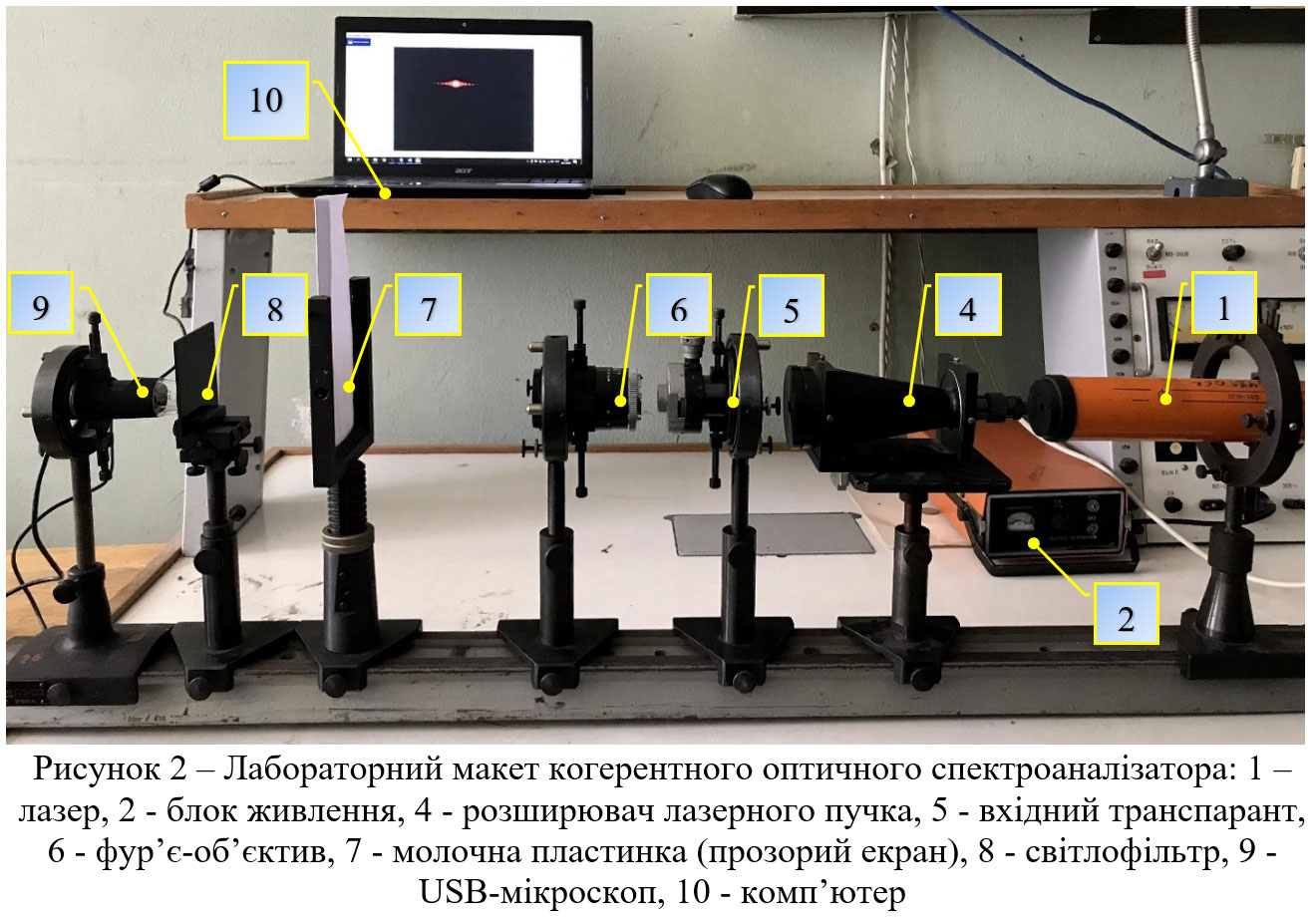Optical-digital processor for thermal imaging surveillance systems image processing
This paper investigates ways to increase the efficiency of coherent optical spectrum analyzers (COSA). The increase in efficiency is achieved through usage of space-time discrete light modulator in the COSA input and through recording of the spatial spectrum with a matrix detector (MD). The matching of the parameters of the modulator, Fourier lens and MD allowed to improve the technical characteristics of COSA. The matching means the choice of parameters of COSA’s components, which allow to obtain improved characteristics of the COSA. The efficiency criterion is based on the input signals change frequency; operating range of spatial frequencies; spatial bandwidth; spatial spectral resolution. Mathematical models of discrete space-time light modulator, Fourier lens, matrix detector, as well as developed methods for designing coherent optical spectrum analyzers were proposed in developed COSA model.
To confirm the results of theoretical research, a laboratory stand COSA was created, which allows you to measure the distribution of light intensity in the diffraction pattern formed by the test object; determining the correspondence of the position of diffraction maxima and minima in the plane of spectral analysis to their spatial frequency; measuring the spectra of test objects obtained using two lasers with different wavelengths; measurement of COSA technical characteristics. New methods of conducting such research have been developed. To measure the COSA characteristics, it is proposed to use a slit and a diffraction grating, as well as a Fourier lens with a variable aperture as test objects. The results of experimental studies confirm the reliability of theoretical studies with a relative error (5 - 10%). Ukraine's patents №132123, №132032 were obtained for the proposed optoelectronic digital image processor and infrared lens.

| Attachment | Size |
|---|---|
| 376.71 KB |




